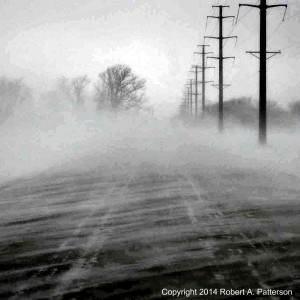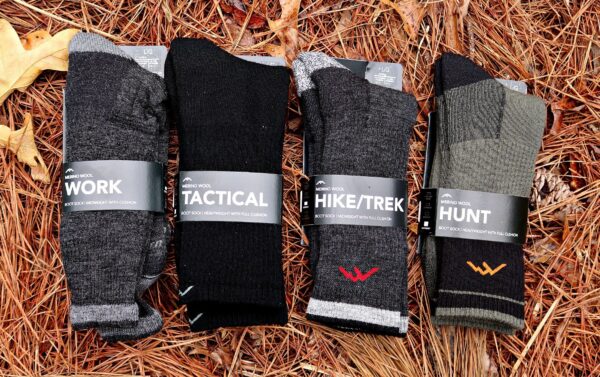If you are perpetually cold – indoors or outside – it could be that you are dressing incorrectly for the situation.
You may be doing some of these things wrong.
by Leon Pantenburg
I know all about dressing inappropriately in the cold. Born and reared on an Iowa farm, I worked outside year-round. Iowa winters can be arctic cold, and it sometimes felt like hypothermia was imminent! In retrospect, it WAS cold working outside, but that was mostly because my clothing and boots just weren’t adequate. In the late 1960s, there was not a lot of affordable, quality winter wear available.
My dad seemed impervious to the weather. All he ever wore was a quilted cotton hoodie under a lightly-insulated jacket. I wore cotton jeans and a 100% cotton base layer. Thick cotton athletic socks were on my feet, and these were worn inside waterproof rubber boots. The rest of my outdoor gear was cotton. I did have a warm “Elmer Fudd” cap with ear flaps that worked really well. All this clothing was warm enough until it got moist from sweat, then it was frigid.
Today, there are a multitude of quality fibers and fabrics in clothing, and staying warm is much easier, and affordable. But you’re not sure what to wear to fight off the cold? Check out these tactical pants.
Here are some tips for staying warm and suggestions on what not to wear.
Wrong clothing fabrics: Cotton kills! Wearing cotton just about guarantees, you’ll end up being cold. Cotton absorbs moisture and traps it next to your skin. Cotton fibers do not wick away moisture and it doesn’t insulate well. That means you’ll be wet and cold, which increases your chances of hypothermia in extreme cases.
Wool, silk or polypropylene inner layers hold body heat better than cotton does. Wool is my Number One choice for winter clothing. Can’t wear it because wool makes you itch? Learn how this may help!
And get some wool pants!
Wind: The moving air removes body heat by carrying away the thin layer of warm air at the surface of your skin. A wind chill factor is important in causing heat loss. Make sure your outer clothing tightly-woven and water-repellent so it can shield you from the wind. These pants come with a wind barrier, and they really work.
Don’t wait too long to start keeping warm: If you start feeling chilly, do something about it immediately. It is a lot easier to stay warm than to warm up.
Don’t sweat: Once you start exerting yourself and sweating, your base layer gets moist, and the heat will get sucked right out out of you. This segues nicely into the next tip.
Layer clothing: Better to have several thin layers than one thick, heavy layer. Add and remove layers as needed so you don’t sweat or get too chilled. A wool sweater should be a standard in your outdoor wardrobe.
Loose clothing: Wear loose-fitting, layered clothing. There is probably no colder garment than tight-fitting cotton denim jeans, because there is no place for a warm layer of air to be. It goes without saying that ripped jeans are even worse!
Head covering: You lose about 10 percent of your body’s heat through your head. A warm hat or cap with earflaps can save your ears from getting frostbite. A wool scarf can be wrapped around your neck and ears for additional warmth.
One of the most useful hats is a wool fedora. Carry a wool or synthetic stocking hat in the trunk of your vehicle.
The wrong socks: Thick cotton athletic socks are about as bad of choice as you can make. Everyone’s feet sweat. That means, those thick cotton socks will get soggy and stay that way. Invest in quality socks. My go-to winter socks are made by Buffalo Wool (I don’t rep for the company, and have no advertising or affiliate relationship with them). I wear those socks because they keep my feet warm.
Another good addition to cold weather footwear is wool insoles. These insulate your feet from the ground and a good pair of insoles may add another 10 degrees of warmth to your boots
The wrong footwear: Since your feet are in contact with the ground, your toes will probably get cold first.
First off, make sure your boots are the right size. Don’t buy the same size as you wear every day at the office. Outdoor footwear should be big enough that you can wear thick socks and still have plenty of room to wiggle your toes. Make sure they are wide enough so you don’t have to cram your feet in. You don’t want cold sore feet.
Plan ahead: Finally, dress for what the worse-case scenario weather conditions might be. If there are potential blizzards, assume you might have to weather the storm. Include clothing suited for that situation.
Finally, stay prepared and stay safe!
Please click here to check out and subscribe to the SurvivalCommonSense.com YouTube channel – thanks!



Leave a Reply